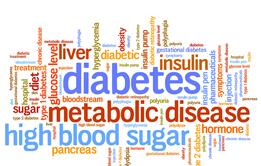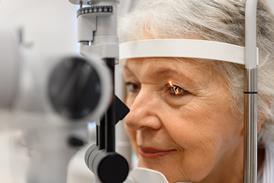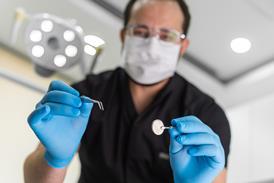Finding time to educate clinicians and users on flash glucose monitoring is often cited as a barrier to more widespread use of the technology. But, some experts argue, it’s a challenge which may have been overstated

Pratik Choudhary understands the concern that increasing access to flash glucose monitoring will increase workloads in primary care. He knows that the prospect of needing to spend a significant amount of time to learn about the technology – and to help patients in turn learn about it – feels immensely challenging. He understands that there could barely be a worse time at which to contemplate yet more responsibilities.
In association with
But, ultimately, he argues the evidence suggests the workload may be less than anticipated.
In June 2021, French researchers published the results of a study exploring rates of hospitalisation in users of flash glucose monitoring. Such technology involves people with diabetes wearing a small sensor on the back of their upper arm, which stores continuous glucose data and so removes the need for regular finger prick tests.
The study found that hospitalisations for acute diabetes complications fell by 49 per cent in those flash users with type 1 and by 39 per cent in those with type 2.
“At an international forum, I asked the lead on that paper how they managed switching patients onto flash glucose monitoring,” says Professor Choudhary, professor of diabetes at the University of Leicester.
“I explained that in the UK, there’s a big question about whether we need to spend a lot of time and energy educating clinicians and patients on how to use this equipment. So I asked the study lead how they had done it in France. And he said: ‘We just changed the prescription [from fingerprick monitoring to flash glucose].’ There was some requirement for education, but that was fulfilled by online videos.”
It means that Professor Choudhary offers one key piece of advice to integrated care systems working to integrate the latest NICE guidelines and widen access to flash: “Keep it simple.”
“The big barrier is thinking that this is like introducing insulin pumps or other diabetes technology. Think of it instead as a one to one replacement for finger pricking. Anyone who can teach finger pricking can teach this; anyone who can review someone using finger pricking can review this. It’s just a simple changeover.
“There’s the impression that it is complicated but it’s not.”
The remote option
He believes that lockdowns proved that remote patient education, via online video or written content, is a viable option. And he argues the same can be true for clinician education. The Leicester Diabetes Centre – a collaboration between the university and the local NHS acute trust – has created a one-hour video package on initiating flash glucose monitoring in primary care.
“We put it together with the Primary Care Diabetes Society,” explains Professor Choudhary. “It’s me talking to a primary care clinician – Clare Hambling, who’s chair of the society – with some case studies and some tips that you might use.”
Ultimately, he argues that the “keep it simple” advice comes from the simplicity of how the technology makes a difference.
“The core benefits of avoiding admissions and getting better glucose control are driven through two things – the machine beeping if you’re too low, and the machine beeping if you’re too high,” says Professor Choudhary. “It beeps and you do something about it. And because you can see your glucose levels more easily, people make decisions themselves; they make the changes. And that’s what avoids admissions, and that’s what saves the NHS money.”
“Information is power,” concludes Patrick Holmes, primary care diabetes lead for North East and North Cumbria ICS’s diabetes network and a practising GP.
“In a sense, that’s what you get with continuous glucose monitoring. And that can be – I’ve seen it – transformative in care, both in type 1 and type 2 diabetes.”
Topics
How can ICSs widen access to innovative diabetes management?

In March 2022, NICE updated its recommendations on the management of diabetes in adults. The new guidelines recommend there should be broader access to intermittently scanned continuous glucose monitoring devices. So how can ICSs deliver on this? Claire Read reports
- 1
 Currently
reading
Currently
reading
The education conundrum





























